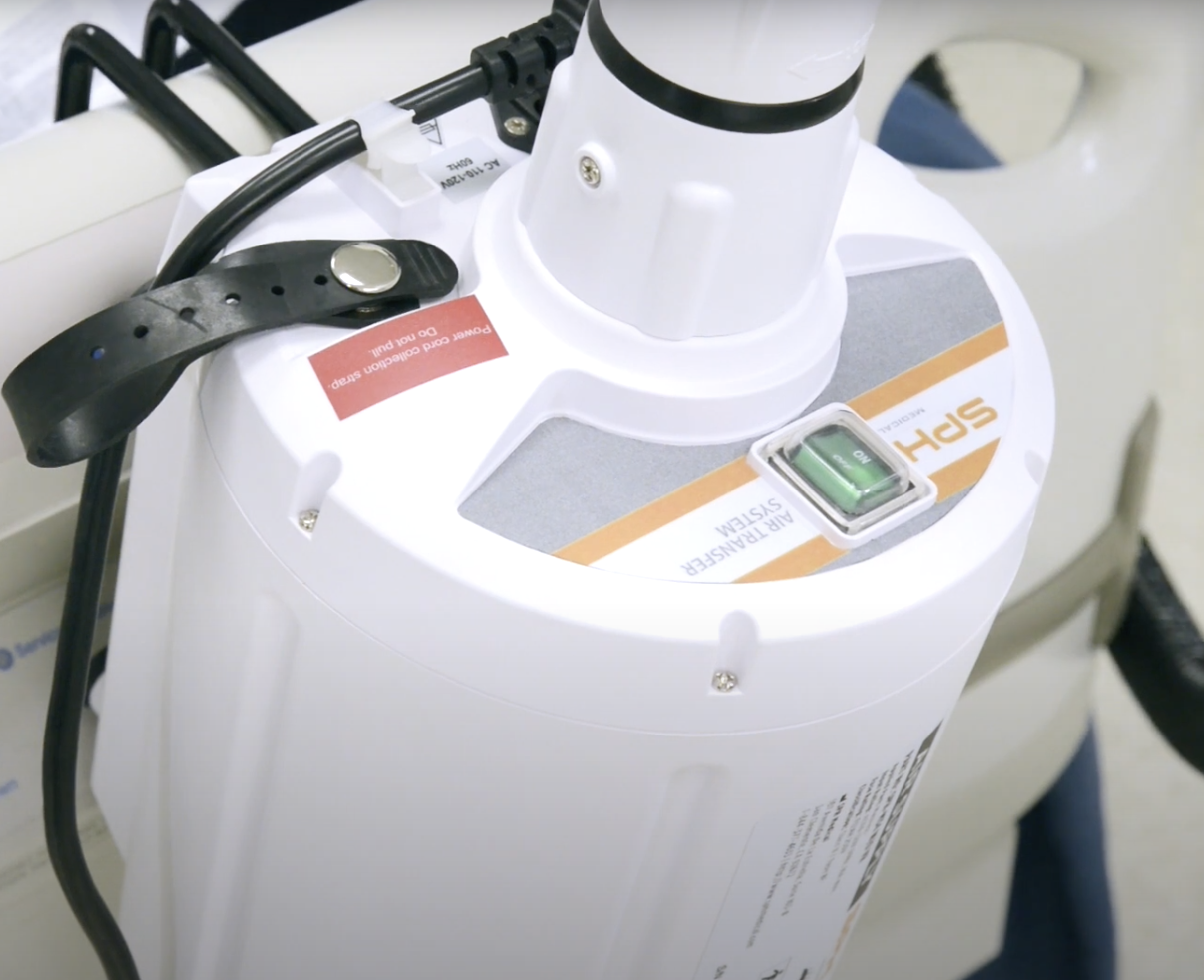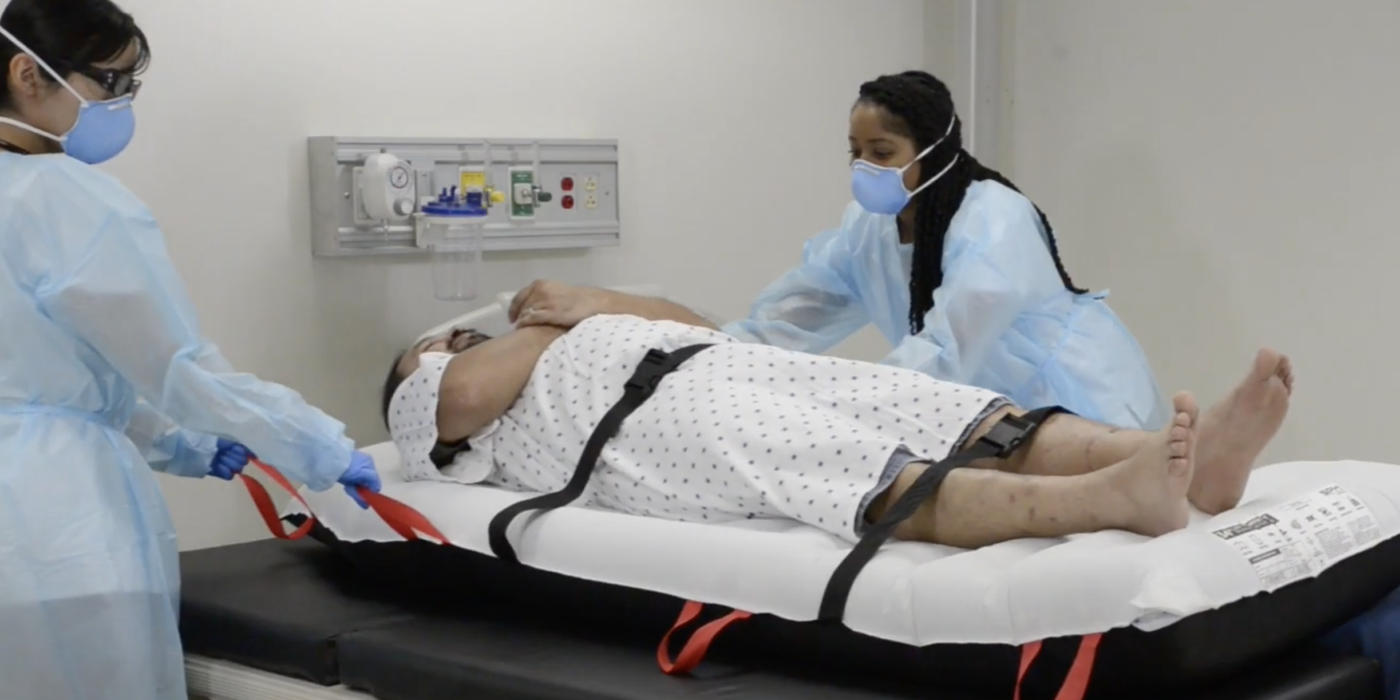For Nurses, their top priority is to provide the best care possible to their patients. One of the most critical aspects of patient care is caring for a patient that is bed bound. Dealing with all the positioning issues for a patient that is considered moderately dependent to one that is total care can be challenging. A total care patient means that the patient is unable to turn or move by themselves. One of the most dangerous tasks that nurses perform is repositioning them up in bed. Patients are always sliding down in bed so boosting them up is always happening. Patient transfers out of bed, as in transferring them from bed to stretcher, can also frequent and can be risky both for patients and healthcare workers. This is why air transfer systems have become one of the most successful methods for transferring patients and reducing injury risks for nurses. In this blog post, we will discuss how air transfer systems can make a difference in patient care and injury prevention.
Air Transfer Systems are used in almost every hospital department to help nurses transfer, boost, and reposition patients. The typical Air Transfer Mattress can support up to 1000lbs. A motor, or blower, inflates the air mattress.  The patient is supported on a bed of air that acts like a floatation device, floating the patient either up in bed, or over to a stretcher, OR table, or CT table. The air transfer system offers a smooth transition for patients, as they move with ease between surfaces, improving patient comfort. Patient satisfaction can be measurably improved using the air transfer system over manual transfers using sheets and old those fashioned slider boards.
The patient is supported on a bed of air that acts like a floatation device, floating the patient either up in bed, or over to a stretcher, OR table, or CT table. The air transfer system offers a smooth transition for patients, as they move with ease between surfaces, improving patient comfort. Patient satisfaction can be measurably improved using the air transfer system over manual transfers using sheets and old those fashioned slider boards.
Today, the SPH Medical Air Transfer System is being used in surgery departments to transfer patients on and off the OR table with ease. After surgery, 100% of patients are considered total care, or unable to assist, so the Air Transfer System makes these predictable transfers over to a bed or gurney safe and efficient. The surgery department may apply the Air Transfer Mattress in the pre-op area so that the patient can be transferred over to the OR table. If patients are able to transfer to the OR table by themselves, the staff will place the Air Transfer Mattress on the OR table before the patient comes in so that it can be simply inflated after surgery to transfer the patient off the table.
The single patient use disposable mattress is the most common air transfer mattress used today because it reduces the risk of cross-contamination. Reusable mattresses are disinfected/laundered before being used for another patient. This practice ensures that each patient is given the highest of standards for infection prevention. Inpatient units like the ICU and anywhere moderately dependent to totally dependent patients are found can benefit by making all the beds with the single patient use air mattress. Having the housekeeping staff make the beds with the air mattress means that the nurse can always reposition, turn, or transfer a patient with the assistance of air.
Air Transfer Systems can also help reposition patients up in bed which is one of the highest frequency tasks a nurse has to perform. And it eliminates the manual pulling or lifting of patients. Nurses face multiple risks when moving patients up in bed manually, ranging from severe back injuries to strains and sprains. The high frequency of this task increases risk of injury for nurses. The air transfer system’s smooth transfer allows patients to be repositioned comfortably, reducing the chances of injury to both nurses and the patient.
Injuries in the workplace are one of the leading causes of nurse attrition. Air transfer systems have been developed to reduce the risk of these injuries. With a measurable reduction in physical exertion and over-exertion, nurses can be safer and happier at work to focus on giving the best care possible to their patients.
Air transfer systems are a worthy investment for hospitals in terms of costs and benefits. Aside from saving employee time and effort, it reduces workers compensation claims and the direct cost of injuries that occur due to improper manual handling. Hospitals who invest in this innovative technology will benefit from reduced costs and and increase in employee retention. Insurance and Risk Managers agree that this is a win for both nurses and patients.
Air Transfer Systems have become an essential component of Safe Patient Handling programs in hospitals to address patient transfers and repositioning, and the reduction of injury risks to healthcare workers. The system offers improved safety, and more efficient methods of patient handling, making it an essential tool for organizations that prioritize employee safety and the best possible patient care. Investing in air transfer systems is a smart choice for hospitals that are committed to continuous quality improvement in patient care and reducing the risk of injuries to all nursing and caregiving staff.
Contact SPH Medical today to discuss reducing hospital supply costs with their affordable single patient use Air Transfer Mattress. SPH Medical offers Safe Patient Handling solutions to hospitals nationwide. And SPH Medical offers hospital mattress replacements including mattresses for Hill Rom Versacare bed frames and Stryker bed frames to effectively redistribute and reduce pressure.

